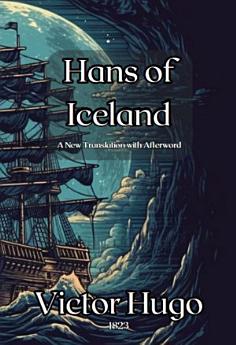Hans of Iceland
About this ebook
Published in 1823 when Victor Hugo was only twenty-one, Hans of Iceland announced the arrival of a daring new voice in French literature. This early novel – a dark romance set in 17th-century Norway – won praise from Hugo’s elders in the Romantic circle for its wild energy and grotesque charm. Critics marveled at the book’s moody scenery and titular villain (a monstrous recluse said to drink the blood of his victims), and the work’s gothic flair quickly earned it a cult following across France.
Han d’Islande (as it was titled in French) appeared during a post-Napoleonic era hungry for passionate, macabre fiction. Hugo’s youthful effort delivered exactly that – a blend of historical melodrama and gothic fantasy that mirrored the period’s fascination with the medieval and the grotesque. In later years, scholars would note how this novel’s themes prefigure Hugo’s grander works: the compassion for outcasts, the dance of good versus evil, and the belief that even a monster can hide a tortured soul. While not as polished as his later epics, Hans of Iceland remains a fascinating first milestone in Victor Hugo’s literary journey, capturing the raw creative fire of a 19th-century genius in the making. Hans of Iceland unfolds as a dramatic adventure where innocence and evil collide in a frozen kingdom. The plot follows noble young Ordener Guldenlew on a quest through mist-laden forests and cavernous mines, seeking the outlaw Hans – a one-eyed giant rumored to embody the cruelty of the north. Along the way, Ordener’s courage is tested by conspirators, bandits, and the terrifying Hans himself, who roams with a pet bear and an insatiable hatred for humanity. Though one of Hugo’s lesser-known creations, the novel brims with folkloric horror and romantic sentiment: a gentle love story threads through the violence, and vivid descriptions of stormy skies and ghostly landscapes reveal the author’s early gift for atmosphere.
This critical reader's edition presents a modern translation of the original manuscript, crafted to help the armchair philosopher engage deeply with Hugo's works through clean, contemporary language and streamlined syntax that clarifies his expansive ideas. Supplementary material enriches the text with autobiographical, historical, and linguistic context, including an afterword by the translator on Hugo’s history, impact, and intellectual legacy, an index of the themes and philosophical concepts he employs—emphasizing Romanticism, social justice, and moral idealism—a comprehensive chronological list of his published writings, and a detailed timeline of his life, highlighting the personal relationships (including his relationship with Charles Dickens) and political commitments that shaped his vision.










